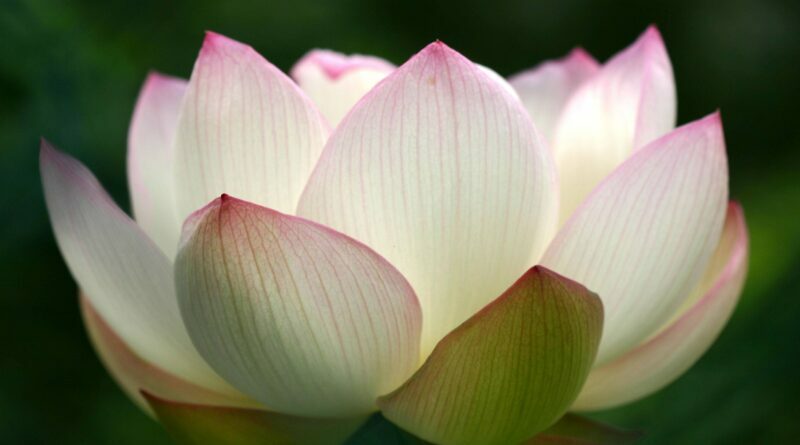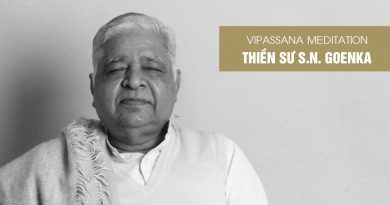Keeping Our Own Minds Healthy
-An Address by Mr. S. N. Goenka to Health Care Professionals
The following was condensed from an address presented at Smith College School of Social Work, Northampton, Mass., July 1991.
Friends, fellow social workers: Let us try to understand the problems faced by health care workers and the solutions to these problems. The profession of social service is a very noble profession. If one gives social service selflessly, without making it a means of livelihood, there is nothing that can surpass it. Even if one makes it a means of livelihood, this profession is a very wholesome profession, a very wholesome means of livelihood. The job of a social worker is to help others. People come to you with melancholy on their faces and anguish and pain in their hearts. You help them to come out of their pain and to enjoy real peace and joy within. What better profession can there be?
Such a noble profession; and yet, it is full of hazards. This noble effort to serve others may result in misery for you if you are not taking proper care of yourself.
Suppose a person comes to you suffering from insecurity and fear of the future. This person is generating a vibration full of agitation and unhappiness; he or she is stuck in a whirlpool of misery. After counselling this person for a period of time you may notice that you also are being sucked into this same whirlpool.
At a very deep level of the mind lie seeds of different kinds of mental tendencies which can bring various kinds of suffering. Your client’s vibrations contact the seeds of fear for the future that lie latent in depths of your mind. The vibrations of these seeds in you are exactly the same as those generated by your client. Your vibrations get tuned up with your client’s vibrations, stimulating your own fear and insecurity, your own seeds of misery. You may not even know that this is happening because it may not immediately show an effect. Slowly, over time, you will continue to be in contact with patients who are experiencing fear and gradually you will find that your problem is becoming magnified.
Unless you remove these seeds of misery from your mind, your job as a clinician will be harmful to your own mental and physical health. A lame person cannot support another lame person. A blind person cannot show the path to another blind person. How can you help others and protect yourself as well? The practice of Vipassana meditation provides an answer to this question.
Vipassana is the science of mind and matter: Whatever arises in the mind, be it fear, insecurity, passion or ego, does so in a very solidified, intensified way that tends to overpowers us. For example, somebody says something you do not like; someone has insulted you perhaps. You react with anger and become miserable. Whether you have harmed the other person or not by this anger you may not know, but you have certainly harmed yourself. The first victim of your anger is yourself: Although you were insulted only once, you continue to repeat this drama on the stage of your mind for long periods of time, thus strengthening the deep reaction patterns of anger.
When we react with anger at the mental level, immediately something starts happening at the physical level. There is a biochemical secretion which starts flowing in the bloodstream. This particular secretion, generated because of anger, is very unpleasant and because we feel unpleasant sensations we become even angrier. And as we become angrier, we generate more biochemical secretions: A vicious circle has started. Similarly passion or fear are associated with their own particular type of secretion. We ourselves are responsible for this flow, no one else. We multiply our own suffering every moment by reacting to these biochemicals, this flow within us. However, if we do not react, but rather observe, this vicious circle will lose its strength, become weaker and pass away. We have to understand this process in order to come out of it.
The entire psycho-physical structure which we keep referring to as “I, mine” is nothing but constantly changing vibrations. We cannot control it or make it non-changing. It is bound to change and does chang. It is just currents, vibrations of different frequencies, different wavelengths. This is the deeper truth of our physical structure. The direct experience of this reality has a profound effect.
We can smile at the reality of insecurity: “Look, it keeps changing—so what? Worry, anxiety—so what? This situation will change.” We observe vibrations as they change, or particular emotions as they arise and pass away. If we do not observe them objectively, they overpower us and multiply, making us a bundle of misery. It is not enough that this truth be accepted at the intellectual or devotional level. It has to be realized at the experiential level, and this is what Vipassana teaches.
When a student comes to a ten-day Vipassana course he or she is asked to explore what is happening within the framework of the body: What truth is manifesting itself? What is happening now?
One starts with something gross, but nevertheless real. The first thing one experiences is the flow of respiration— the breath coming in, the breath going out, naturally, effortlessly. We don’t make an effort to breathe in or breathe out. We don’t try to control the breath. The whole technique is to develop the faculty of observing reality from moment to moment, as it is, not as we would like it to be. So we try to observe the breath as it is. If it is deep, it is deep; we don’t try to make it shallow. If it is shallow, it is shallow; we don’t try to make it deep. If it is passing through one nostril, we accept this; we don’t try to direct it to the other. If both nostrils, then both nostrils. The flow of respiration is there, coming in, going out. We are observing; we do nothing.
It should be easy, and yet one finds it so difficult. One observes just one or two breaths and the mind wanders away. Only after a few minutes, does one realize, “Oh, I am here to observe my breath. What happened?” Again one starts—one or two breaths and again the mind wanders away. One feels irritated; “It should be such an easy task to just observe the breath. What kind of mind do I have? It can’t even observe the natural flow of the breath without running here and there.”
Then your guide will say, “No, no, don’t react. Just accept reality as it is. This is the truth of this moment: The mind has wandered away. Accept it smilingly.”
The old habit pattern of the mind is to react when something unwanted happens. And now you don’t want your mind to wander away; but it has wandered, and you react with aversion, anger. Whether you generate anger toward others or toward yourself there is no difference. Anger is anger and it will make you very miserable. We come out of this suffering by accepting the truth as it is: “My mind at this moment has wandered away.” The breath is still there, and your attention easily returns to it the moment that you accept that the mind has wandered away. You may observe a few breaths and again the mind wanders away. You realize, “Oh, look—it has wandered away.” And again you bring it back. One works like this for a few days and the mind starts settling down because one is learning to accept the truth as it is without reacting.
Respiration has a lot to do with the mind and the mental contents. As you observe the breath a thought may arise, maybe a thought of the past or the future, and you react with craving or aversion. Perhaps anger arises and you notice, “Look, anger has arisen.” As a result of this anger, the breath loses its normalcy and becomes slightly hard, slightly fast. When this particular anger subsides, you notice that the breath becomes normal again. So this breath is strongly connected to your mind and your mental impurities.
After the mind calms down a little, one starts experiencing something else: Every moment throughout the body, in every particle of the body, some electromagnetic reaction, some biochemical reaction is taking place. Usually the mind at the surface level is so gross that it can’t feel what is happening at deeper levels of the physical structure. But now with a concentrated mind one can feel these very subtle sensations, biochemical reactions, currents, vibrations, etc.
Because one starts with the attention at the entrance of the nostrils, one starts feeling sensations on this area first. They can manifest in a variety of ways; for example, as heat, perspiration, throbbing, pulsing, vibrating, tingling, tension, strain or many other things. You feel something or the other on this spot, and then you are also trained to observe this objectively. “Now there is heat—so what? It is heat. Throbbing, itching,”—various things—“Let me see how long they last.” You just observe objectively. On the fourth or fifth day, you may reach a stage where you feel sensations such as these throughout the body. You continue to move your attention from head to feet and from feet to head, observing these sensations on the body.
Just as it was with respiration, so it is with sensation. All the sensations on the body—the heat, the tension, the pressure, the vibration—all are connected with one’s mental impurities, the defilements which are the source of our suffering. When anger arises there is a reaction throughout the body. There is heat, perspiration, tension, palpitation. All these are related to our anger; similarly to our fear, our passion, our anxiety. Whatever arises in the mind manifests itself as a sensation on the body. It is this sensation on the body to which the mind reacts.
At the deepest level of the mind, are many hidden reaction patterns which are accumulations of misery from the past. They lie latent, and at any moment, due to some stimulation or the other, they can arise as unpleasant thoughts or sensations and overpower us, making us suffer again. In fact, every moment our minds generate some vibration or the other. This vibration may be positive or negative, but usually it is unwholesome because we remain ignorant of what is happening deep inside. Even though we do not want to, we harm ourselves because we react to the sensation on the body. We thus multiply our suffering. Because the entire atmosphere becomes influenced by these vibrations of negativity, we harm others as well. Every person is generating vibrations and influencing the atmosphere around, and in turn is getting influenced by the vibrations of other people.
So if you are dealing with a client who has a vibration in harmony with reaction patterns deep within you, this will trigger something at the depths of your mind, often overwhelming you. If you can free your mind of these patterns then the service you give will be wonderful, because your mind will be sound and healthy. You will smilingly face the vibrations being generated by others. Even if this triggers something in you, you will observe your reaction, float over it, but you will not sink. It will not overpower you. This means you are free from this particular misery.
All this has to be realized at the experiential level. Merely talking or discussing will not help. Discussions and talks can give us inspiration, some guidelines perhaps. They can show us a path but we must walk on the path. We have to make a journey inside to realize the truth, the truth of the interaction of mind and matter. But this has to be practiced. It requires a lot of practice.
There are many students of Vipassana who have the job of serving others. They may be counsellors, social workers, massage therapists—those practicing different ways of helping people. I advise these students to take a short break between one patient and the next. I advise them; wait a little—ten minutes or so—and relax. One can easily do this at the physical level, easing the tension accumulated by counselling someone. However, unknowingly you have absorbed the vibrations of that person deep inside you, and they make you a bundle of tension. Unless you first calm that reaction, you should not work with another person. By practicing Vipassana, and feeling sensations throughout the body, within ten minutes or so you will feel refreshed. Your battery will be charged again, and you will be ready to work with another patient.
A pure mind is a powerful mind. A pure mind is always full of infinite love; full of compassion, without a trace of passion. You expect nothing in return; you just feel like giving. This is the quality of a pure mind—full of love, full of compassion, full of sympathetic joy, full of equanimity. If you speak even two words with this kind of mind they will be very effective, because your mind has such a pure vibration. The patient will feel healed just by these few words spoken by you. However, if at the surface level you speak very healing, counselling words, and deep inside you are agitated, then the vibration that goes with your words will not have that positive effect.
So be a good healer; and to be a good healer first heal yourself. Go deep inside. Calm your mind, purify your mind. See that it is full of pure love, expecting nothing in return, full of compassion, full of sympathetic joy, and full of equanimity. You will find that all the hazards of your work disappear; all the pitfalls are gone. You will become strong, not a lame person helping another lame person, not a blind person showing a path to another blind person.
Vipassana will help you to become a good human being, a healthy human being, full of harmony, full of peace, full of tranquillity, with a sound mind and sound body. With a sound mind you can help others better and become a really effective social servant. May all of you become good social servants.
May you all be peaceful, be happy, be liberated.
A question and answer session after Goenkaji’s address included the following two questions:
I feel that our emotions can be teachers, that we can learn from our anger or our sadness. What is the view of Vipassana on this?
Emotions by themselves do not make us miserable. If we can learn how to observe our emotions, we come out of misery and therefore learn something from them. But if we allow ourselves to be overpowered by these emotions then we suffer. One thing Vipassana teaches us is this: Emotion will arise; let me observe it objectively. “Look, this is an emotion: anger or sadness,” or this or that. “Along with this let me observe what sensation is on the body. Ah, this sensation is impermanent. Let me see how long it lasts.” This is how we come out of our suffering.
Vipassana focuses on the internal reality. That’s fine, but what about the external reality that really causes a great deal of suffering? What use is Vipassana in dealing with the real pain of the world?
Understand, Vipassana is not an escape from the problems of day-to-day life. One comes to a course for ten days to learn the technique of Vipassana and gain strength to face the problems of the outside world—just as you might go to a hospital to become physically healthy, and then leave to live healthily in the world. Similarly, when you learn to use this technique of observing the reality inside, you can face the problems outside more easily. It is not that by the practice of Vipassana all the problems will disappear; but rather, your ability to face them will improve.
The problems of the outside world are created by individuals living in the darkness of ignorance. Just as lighting one lamp will dispel the darkness around it, similarly, one person practicing Vipassana will affect society. If more people practice Vipassana, slowly this will start having a positive influence in the world. Even if only this one person is practicing Vipassana at least he or she will be able to face the problems and find solutions. And those solutions will be healthy solutions.
Source: https://www.vridhamma.org/discourses/Keeping-our-Own-Minds-Healthy




